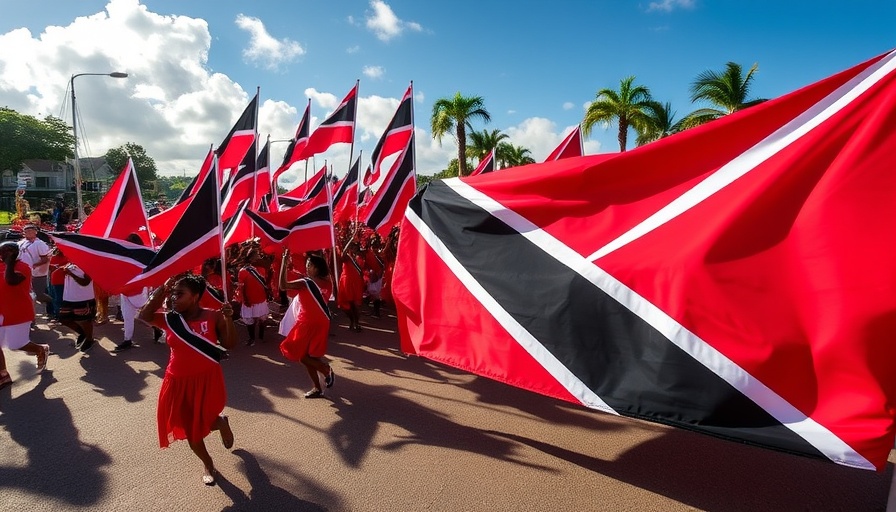
Celebrating Trinidad and Tobago National Day: A Rich Tapestry of Culture
As we mark Trinidad and Tobago National Day, it’s essential to reflect on the unique cultural identity of this twin-island nation. Celebrated annually on August 31st, National Day commemorates Trinidad and Tobago’s independence from British rule in 1962, shaping its vibrant society defined by a mixture of ethnicities, languages, and traditions.
A Historical Perspective: The Journey to Independence
The road to independence in Trinidad and Tobago was marked by social and political efforts from leaders like Dr. Eric Williams, often hailed as the "Father of the Nation." His leadership, along with a growing desire for self-governance among the populace, led to pivotal changes in the administration. Understanding this history not only honors the struggle for independence but also serves as a reminder of the ongoing journey toward political and social recognition in other contexts around the world.
The Importance of National Identity in the Modern Age
In today's globalized world, the celebration of national identity remains crucial. For Trinidadians and Tobagonians, National Day is not just a public holiday; it’s a chance to celebrate cultural heritage, whether it’s through music, food, or customs. Events such as carnival and various local celebrations bring communities together, fostering national pride and unity. This cultural affirmation is vital as it intertwines with the global discourse on identity and belonging.
Insights on Contemporary Relevance
In recent political news, Trinidad and Tobago have navigated several challenges, including economic diversification and environmental sustainability. As we highlight the importance of cultural celebration, it’s interesting to consider how these issues intersect with national pride. Today’s younger generations are increasingly aware of how climate change impacts not only local ecosystems but global interactions, emphasizing the role of sustainable practices that reinforce national identity.
Reflection through Art and Expression
Art plays an influential role during National Day celebrations. From calypso music to soca dancers, artistic expression serves as both entertainment and a commentary on social issues. The stories told through local art reflect the collective consciousness and historical narratives, showcasing how cultural identity is continuously evolving. This reflects a broader trend within societies that use creative avenues to address critical current events and policies.
Future Predictions: The Role of Youth in Cultural Preservation
The youth of Trinidad and Tobago are increasingly becoming the torchbearers of cultural preservation, blending traditional forms with modern expressions—whether through digital platforms or international music collaborations. This trend could potentially lead to a renaissance of cultural appreciation, driving home the importance of local heritage while linking to a global audience. As insights into technology and globalization evolve, so too will the expressions of national identity.
Conclusion: Embracing Heritage and Looking Forward
As Trinidad and Tobago celebrate their National Day, it’s a poignant reminder of the importance of cultural identity, heritage, and the ongoing narrative that is shaped by the past and present. Engagement in the community through celebration is vital, reinforcing bonds and promoting understanding. Whether you're a local or a global observer, recognizing the richness of this culture can foster important discussions around national and global challenges.
To explore Trinidad and Tobago's developments and continue celebrating diverse cultures, consider engaging with local festivities or learning more about their history and contemporary issues through available resources. This engagement helps in acknowledging not only Trinidad’s national pride but also contributes to understanding global diversity in the vast sea of national identities.
 Add Element
Add Element  Add Row
Add Row 



Write A Comment